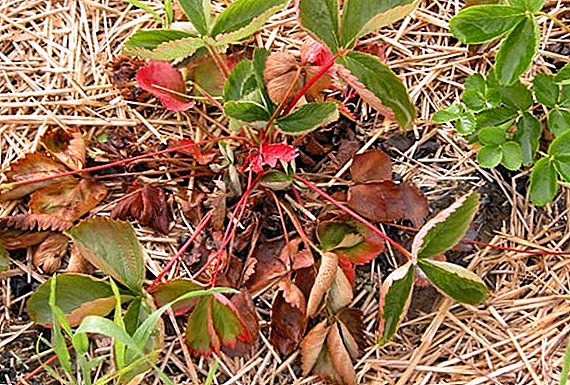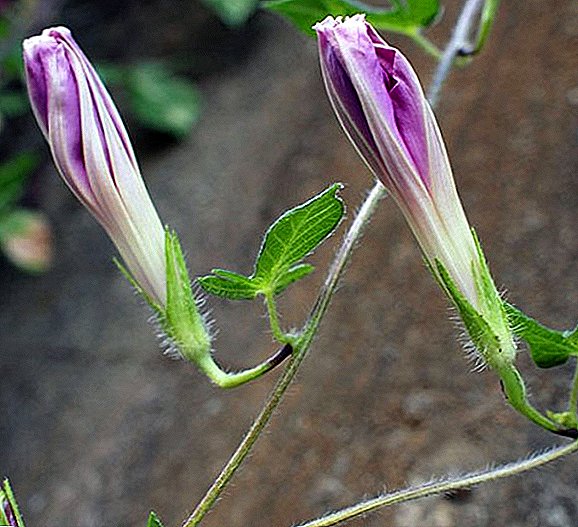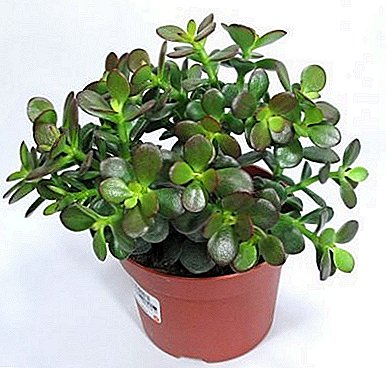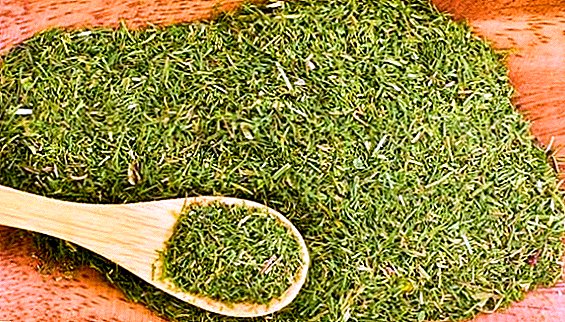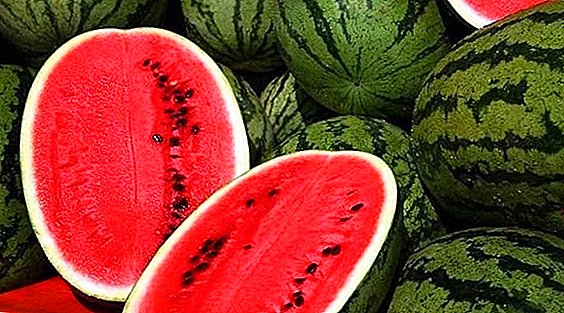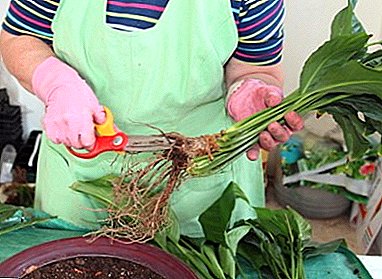
Spathiphyllum, or "female happiness", you need time to properly transplant.
If you follow all the rules of care, the plant will regularly delight their owners with large white exotic flowers.
This article describes in detail how to properly transplant spathiphyllum for its successful development.
What affects the transplant flower female happiness at home?
Season
It is possible to replant "female happiness" at any time of the year, the main thing is that the air temperature in the room be above +20 degrees. However, the best period for spathiphyllum transplantation is considered the end of winter - the beginning of spring, when the exot begins to wake up after a period of rest.
Sometimes an urgent need to update the soil of a flower occurs in the winter, for example in December, then the owner should not reflect on whether this can be done and make sure that during the procedure the roots of exotic do not get frozen and transplant. Before it starts, you should heat the air in the room to 20-22 degrees with heaters and install a humidifier.
Plant age
 When choosing the optimal schedule of transplantation is recommended to pay attention to the age of the flower.
When choosing the optimal schedule of transplantation is recommended to pay attention to the age of the flower.
Spathiphyllum up to 3 years old is considered young., as he is actively gaining growth. During this period, it is advisable to transplant it into a larger pot at least 1 time per year so that the plant is not crowded. From 3 years old and more, the flower is considered mature, and its growth slows down. Therefore, it should be replaced less frequently.
State of culture
The bad condition of the flower or the appearance of pests on it is a reason to transplant it as soon as possible. If the plant does not provide timely assistance, then it may soon wither. Signs of a poor spathiphyllum condition:
- leaves become less elastic;
- the appearance of brown or yellow spots on the leaves;
- blackening of the corners of the leaves;
- the appearance of rotten areas on the leaves and stems.
If at least one of the above signs are observed in a spathiphyllum, then it is necessary to carefully remove it from the pot and check the condition of the roots. The presence of rotten and damaged areas on the roots suggests that the flower should be transplanted as soon as possible.
In this case, before transplanting, it will be necessary to put the plant in order, cutting off the affected leaves, stems and roots with a sterile knife.
Is it possible to update the soil during the flowering period?
It is not recommended to update the soil at the spathiphyllum during flowering., because during this period he is especially vulnerable. If during flowering to disturb him with a transplant, then with a high probability the plant will start to wither. And any damage to the roots can lead to the death of the flower.
In emergency situations, if this is the only way to save an exotic flower, soil renewal is allowed during flowering. Then, when transplanting, it is necessary to cut flowers and buds with a sterile blade or scissors.
When is a transplant needed urgently?
 There are a number of cases in which an urgent transplant is the only way to save the plant. These cases include:
There are a number of cases in which an urgent transplant is the only way to save the plant. These cases include:
- Strongly protruding from the soil and drainage holes, the roots, which indicate that the plant is catastrophically little space in the same pot.
- Infected with various parasites soil.
- Infection of plants with fungus.
- Excess mineral in the soil.
- The flower was flooded, causing the roots to rot.
- Wilting recently purchased plants.
How often is this better done?
During the period of active growth, the young flower is recommended to be replanted 1 time per year or as it grows, when the plant becomes crowded in the pot.
In mature spathiphyllum, the soil is usually renewed less frequently, every 3-4 years, or in emergency cases.
It is necessary to update the soil, as over time it is depletedand the roots will lack nutrients. And the structure of the soil itself becomes harder, causing the natural processes to be disturbed: water in the pot is retained and oxygen to the roots is poorly supplied.
When is the procedure prohibited?
- It is not recommended to repot the spathiphyllum during flowering, as during this period it is especially vulnerable. If during flowering to disturb him with a transplant, then with a high probability the plant will start to wither. And any damage to the roots can lead to the death of the flower.
- After buying spathiphyllum in the store, it is not recommended to immediately begin to update the soil. Changing the situation so it becomes stress for the flower, and transplantation can only aggravate the situation. It will be optimal to wait 2-3 weeks, when the spathiphyllum will get used to the new mode of lighting and the air temperature in the room, and transplant.
- An exotic flower cannot be transplanted if the room temperature is low (below 15 degrees), as there is a risk of freezing the roots.
Thus, the ideal time for a spathiphyllum transplant is the beginning of his awakening after a period of rest, March and April. If you transplant it in time, the plant will please its owner with a long and abundant flowering.


